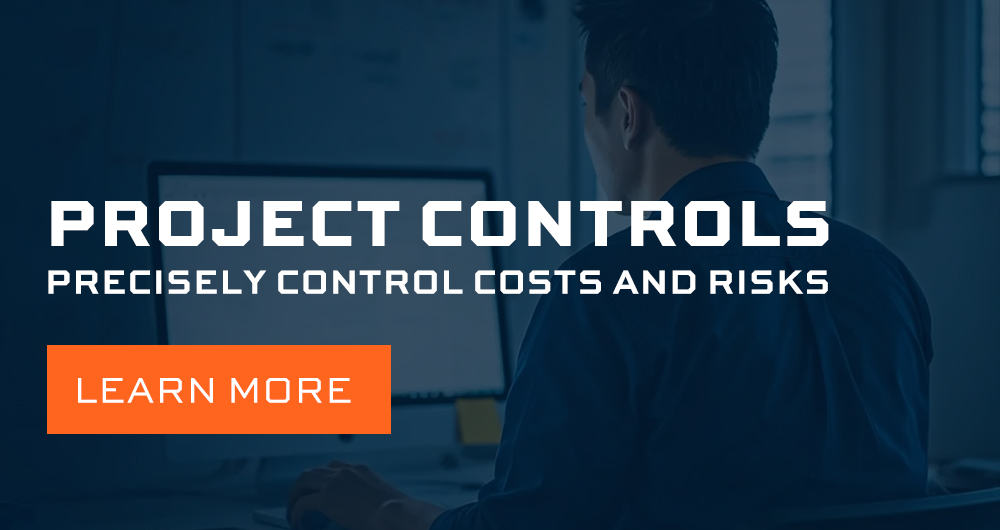Organizations face increasing challenges today due to rapidly changing customer demands, market conditions, and technological advancements. Making informed decisions quickly and accurately is critical to staying ahead of the competition. Artificial Intelligence (AI) is a powerful tool that can help organizations make more intelligent decisions by leveraging data-driven insights and automation capabilities. This discussion will explore how AI can be leveraged in design and construction for more thoughtful choices.
AI in Design
Design is essential to any construction project, and AI can significantly enhance the design process. With the help of AI, designers can create more innovative and tailored designs that meet the needs of individual customers.
One of the primary ways AI can help in design is through generative design. Generative design uses algorithms to generate multiple design options based on inputs and constraints. The AI system analyzes the data and creates design options that meet the desired criteria. This approach allows designers to explore various options quickly and efficiently, saving time and resources.
Other ways AI can be applied in design are:
Design Optimization. AI can optimize the design process by analyzing data and generating design options that meet specific requirements. AI can create designs based on materials, cost, sustainability, and performance, and AI can also consider multiple design options and develop the best one based on specific criteria. Engineers and architects can create more efficient, cost-effective, and sustainable designs by leveraging AI.
Building Information Modeling (BIM). BIM is a 3D digital representation of the physical functional characteristics of a building. AI can analyze data from BIM models to identify potential design issues and optimize building performance. AI can monitor and optimize building systems such as HVAC, lighting, and security by analyzing sensor data. AI can also help identify potential energy-saving opportunities in building design.
Structural Analysis. AI can analyze complex structures and identify potential design flaws. By analyzing sensor data, AI can monitor the performance of structures such as bridges and buildings in real time. AI can also help identify potential issues such as corrosion, deformation, and cracks. By identifying these issues early, engineers can take corrective action to prevent failures and improve structural integrity.
Materials Research. AI can analyze data and identify new materials that can be used in construction. AI can help identify new, more robust, durable, and sustainable materials by analyzing data and material properties. AI can also analyze data on material usage and suggest alternatives to reduce costs and improve efficiency.
Design Automation. AI can automate repetitive design tasks such as drafting and modeling. By automating these tasks, engineers can focus on more complex design challenges, which can improve productivity and reduce errors. AI-powered tools can automate tasks such as geometry collision resolutions, freeing designers to focus on more nuanced aspects of the design process.
AI in Procurement
Procurement is a critical business function involving sourcing, purchasing, and delivering goods and services. In recent years, AI has emerged as a powerful tool to help organizations optimize their procurement process. Here are some potential uses for AI in procurement:
Spend Analysis. AI can analyze spending patterns and identify areas of cost savings. By analyzing historical spending data and supplier performance metrics, AI algorithms can identify patterns and trends to help procurement teams make more informed decisions about which suppliers to work with and which products or services to purchase.
Supplier Identification and Management. AI can streamline the process of identifying and managing suppliers. By leveraging data analytics and machine learning algorithms, AI can help procurement teams identify new suppliers and evaluate their performance, reducing the time and effort required to manage supplier relationships.
Contract Management. Contracts are a critical procurement component, and AI can help streamline the contract management process. By leveraging natural language processing algorithms and large language models, AI can help procurement teams analyze contracts and identify key terms and conditions. AI can help procurement teams ensure contracts comply with legal requirements and that suppliers meet their obligations.
Purchase Order Automation. AI can automate the creation and management of purchase orders. By integrating AI with procurement tools, AI algorithms can help automate the creation of purchase orders, reducing the time and effort required to manage procurement processes. AI can help procurement teams focus on strategic tasks like supplier relationship management and spend analysis.
Invoice Processing. AI can streamline the invoice processing process by leveraging optical character recognition (OCR) technology and machine learning algorithms; AI can help automate the processing of invoices, reducing the time and effort required to manage invoices. AI can help procurement teams ensure invoices are processed accurately and on time.
Predictive Analytics. AI can help procurement teams make more informed decisions by providing predictive analytics. By analyzing historical data and supplier performance metrics, AI can help procurement teams predict future demand for products and services. This can help procurement teams make more informed decisions about when and how much to purchase, reducing waste and optimizing inventory.
Risk Management. AI can help procurement teams manage risk by analyzing supplier data and identifying potential risks. AI can help procurement teams identify suppliers with a history of poor performance or non-compliance. This can help procurement teams make more informed decisions about which suppliers to work with, reducing the risk of supply chain disruptions.
AI in Construction
Construction projects can be complex and time-consuming, and AI can help streamline processes, reduce costs, and improve efficiency. AI can be leveraged in various aspects of construction:
Project Planning and Design. AI can be used in the early stages of a construction project to help with project planning and design. By leveraging algorithms and machine learning, AI can analyze data from previous projects and provide insights into best practices, materials, and design decisions. AI can help architects, designers, and engineers create more efficient, cost-effective designs, reducing project timelines and costs.
Safety Monitoring Planning and Design. Safety is a top priority in any construction project, and AI can help improve safety monitoring on job sites. AI-powered tools can monitor job site conditions in real-time, alerting workers and supervisors of potential safety hazards. For example, AI-powered sensors can detect when workers are in unsafe proximity to heavy machinery, triggering an alert to prevent accidents.
Quality Control. Quality control is another area where AI can be leveraged in construction projects. AI-powered tools can monitor the quality of materials and construction work, detecting defects or issues in real-time. This can help reduce the likelihood of errors and the need for rework, saving time and money.
Construction Management. AI can also be used in construction project management to improve efficiency and reduce costs. By automating scheduling, resource allocation, and procurement tasks, AI can help construction project managers make more informed decisions, reducing delays and cost overruns.
Equipment Maintenance. Equipment maintenance is a critical aspect of any construction project, and AI can be used to improve maintenance processes. By analyzing data from sensors and equipment monitoring tools, AI can predict when maintenance is needed, reducing the likelihood of breakdowns and prolonging equipment lifespan.
Autonomous Vehicles and Drones. Autonomous vehicles and drones can also be used in construction projects to improve efficiency and reduce costs. Autonomous vehicles can transport materials and equipment to job sites, reducing the need for manual labor and enhancing safety. Drones can survey job sites and monitor progress, providing real-time data that can be used to inform decision-making.
What’s the Overall Payoff?
In conclusion, AI can be a powerful tool for organizations looking to make smarter decisions through all stages of the project life cycle. AI has the potential to revolutionize the construction industry by improving efficiency, reducing costs, and improving safety.
By using generative design and analyzing consumer behavior data, designers can create more innovative and personalized designs that meet individual customers’ needs.
By leveraging AI-powered tools for project planning and design, safety monitoring, quality control, construction management, equipment maintenance, and autonomous vehicles and drones, construction projects can be completed more efficiently and with greater accuracy.
As AI advances, it will undoubtedly play an even more significant role in helping organizations make smarter, more human decisions and stay ahead of the competition.
Ready to take a deeper dive? Schedule a one-on-one consultation to discover how InEight can help you succeed in your construction digitalization journey.




